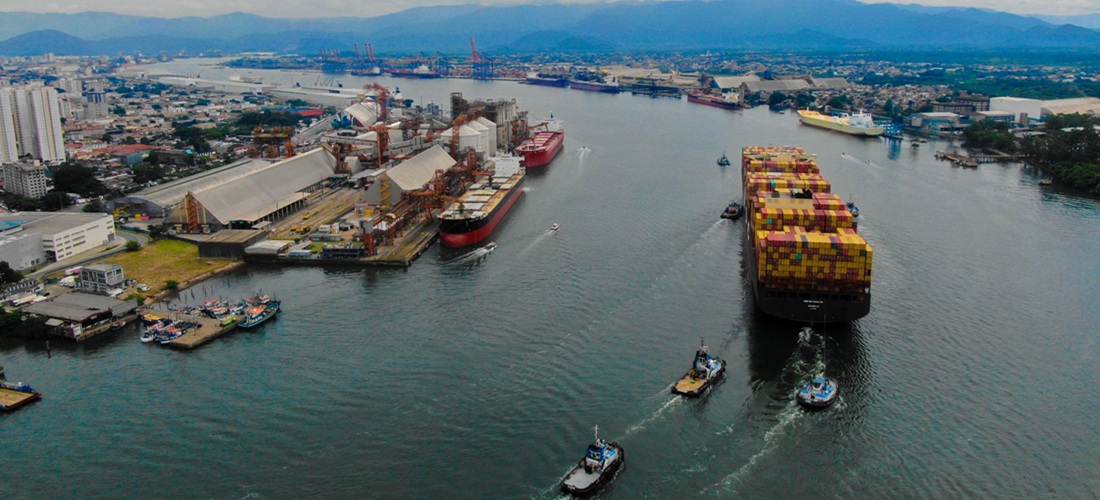
Port of Santos Implements Digital Twin to Enhance Operations and Efficiency
Feb, 20, 2025 Posted by Gabriel MalheirosWeek 202508
The Santos Port Authority (APS) has taken another step toward digital transformation with the launch of a digital twin at the Port of Santos. Developed in partnership with Itaipu Parquetec, the technology will create a highly accurate virtual replica of the navigation channel and much of the port’s physical infrastructure. The initiative, which began in late 2024, is part of the port’s modernization strategy, aiming to streamline operations, reduce costs, and enhance safety. The contract was officially published in Brazil’s Federal Gazette on February 13.
Functioning as a virtual laboratory, the digital twin enables real-time monitoring of vessel traffic, cargo throughput, and berth occupancy. It also allows for scenario simulations, such as introducing new shipping routes or modifying operational procedures, without disrupting port activities. Moreover, the technology enhances predictive capabilities, enabling faster and more informed decision-making.
The chart below compares containerized exports and imports at Brazil’s Port of Santos. The data was derived from Datamar’s DataLiner.
Port of Santos Exports and Imports | Jan 2021 – Dez 2024 | TEUs
Source: DataLiner (click here to request a demo)
“The Port of Santos is advancing to a new level of innovation and efficiency. With the digital twin, we will have a powerful tool to optimize operations and prepare the port for future challenges,” said APS President Anderson Pomini.
The project will be rolled out in phases, starting with a detailed mapping of port structures, including strategic buildings and the Itatinga power plant, along with its transmission lines. This data will serve as the foundation for building the digital model, which will enable continuous monitoring and operational scenario simulations.
Digital twin technology is already in use at major global ports such as Rotterdam (Netherlands), Houston (USA), and Tianjin (China), where it has significantly improved efficiency and sustainability. By adopting this innovation, the Port of Santos aligns itself with global best practices, reinforcing APS’s commitment to modernization and technological leadership in the maritime logistics sector.
With this cutting-edge advancement, the Port of Santos positions itself among the most technologically advanced ports in the world, further strengthening its competitiveness in the global logistics landscape.
-
Meat
Dec, 19, 2023
0
Chicken meat exports from Brazil on record-braking path, up 6.8%
-
Ports and Terminals
Dec, 15, 2022
0
Brazil’s cabotage incentive program brings little gains to the port sector
-
Environment
May, 20, 2024
0
Cargo movement slows at Brazil southern port amid flooding, officials say
-
Economy
Aug, 16, 2024
0
Americas Quarterly highlights economic improvements in Paraguay


